Results 11,681 to 11,690 of 12089
Thread: Anandtech News
-
04-05-23, 04:20 PM #11681
Anandtech: Asus Preps ROG Ally: A Portable Windows Game Console with Custom Zen 4 + R
Asus has begun teasing its own portable game console, the ROG Ally, which the company is positioning as a high-end offering for the handheld PC gaming market. With its ROG Ally, Asus is certainly trying to join in on the rise of portable x86-based game consoles, which have been inspired by the Steam Deck system and further stimulated by game developers' enthusiasm to optimize their titles for these portable low-power PCs.
This weeks reveal, which included a questionably timed April Fool's joke that was, in, fact, not a joke, is less of an announcement and more of a teaser on what Asus is working on. As such, Asus hasn't revealed much in the way of detailed specifications, let alone a release date or pricing. None the less, the company feels confident enough in the product at this point that they're showing off a prototype to whet gamers appetites ahead of what's presumably a proper release later this year.
More...
-
04-05-23, 04:20 PM #11682
Anandtech: AMD Computing & Graphics EVP Rick Bergman to Retire - Jack Huynh Named Rep
In a brief press release sent out yesterday afternoon, AMD has announced that its executive leadership team is going to see some changes. Rick Bergman, the current executive vice president of AMD’s important Computing and Graphics business group, has announced that he will be taking up retirement later in the quarter. In his place, long-time AMD executive and design engineer Jack Huynh has been appointed as the new senior vice president and general manager for the group.
Rick Bergman is a well-known name at AMD with a significant history at the company, most notably on the GPU side of the business. Prior to re-joining AMD in 2019 to lead the Compute and Graphics business unit, he was CEO of Synaptics from 2011 through 2019. Before leaving AMD the first time, Bergman worked at AMD (and earlier acquisition ATI) for over a decade, serving in various roles overseeing AMD’s GPU and CPU technologies, and helping to orchestrate AMD’s late 2000s graphics renaissance. This will mark the second (and final) time that Bergman is leaving the company, as he is retiring from AMD – though AMD notes that he will be sticking around through the current quarter “to ensure a smooth transition.”
In his place, long-time AMD executive (and design engineer) Jack Huynh has been tapped to lead the Computing and Graphics group. Huynh has been at AMD for over two decades, and prior to his new appointment, he was the senior vice president and general manager for AMD’s rather successful Semi-Custom business group for several years. With his new position, Huynh will have broad dominion over AMD’s desktop chip efforts, covering both CPUs and GPUs, including the ongoing development of AMD’s next generation of consumer and gaming products.
“Under Jack’s leadership, AMD has strengthened our position as the leading provider of custom solutions for gaming,” said Dr. Su. “We see strong long-term growth opportunities for our Computing and Graphics business as we bring our high-performance CPU and GPU IP together with our leadership software capabilities to create differentiated solutions across our foundational gaming franchise and a broader set of markets. As we welcome Jack in his expanded role, I also want to personally thank Rick for his many contributions and dedication to our business throughout his years with AMD.”
More...
-
04-06-23, 02:54 AM #11683
Anandtech: Samsung and AMD Renew GPU Architecture Licensing Agreement: More RDNA Exyn
In a joint press release released this evening, AMD and Samsung have announced that the two companies are renewing their GPU architecture licensing agreement for Samsung’s Exynos SoCs. The latest multi-year deal between AMD and Samsung will see Samsung continuing to license AMD’s Radeon graphics architectures for use in the company’s Arm-based Exynos SoCs, with the two companies committing to work together over “multiple generations” of GPU IP.
The extension of the licensing agreement comes just shy of 4 years after Samsung and AMD announced their initial licensing agreement in June of 2019. The then-groundbreaking agreement would see Samsung license Radeon GPU IP for use in their flagship Exynos SoCs in an effort to get a jump on the mobile SoC market, tapping AMD’s superior Radeon graphics IP to get access to newer features and more efficient designs sooner than Samsung otherwise might have with their own internal efforts.
More...
-
04-06-23, 04:51 PM #11684
Anandtech: ASRock Industrial 4X4 BOX-7735U UCFF PC Review: Zen 3+, RDNA2, and USB4 in
ASRock Industrial is one of the few vendors with a lineup of ultra-compact form-factor (UCFF) computing systems based on the latest Intel and AMD platforms. Their lineup of NUC clones - the NUC BOX series with Intel, and the 4X4 BOX series with AMD - has enjoyed significant market success, mainly due to their commitment to leading edge processors. The company introduced the 4X4 BOX-7000 series UCFF PCs based on AMD's Rembrandt-R SoCs in early February, and sent across their flagship SKU - the 4X4 BOX-7735U/D5 - to be put through our rigorous evaluation routine.
The 4X4 BOX-7735U/D5 is one of the first UCFF mini-PCs to rely on DDR5 SODIMMs, and it is the first AMD-based mini-PC in our labs to include USB4 functionality (with PCIe tunneling). The process improvements in moving to Zen 3+ and a re-architected integrated GPU should theoretically deliver significantly better performance and power efficiency over a range of workloads when compared to the Cezanne-based flagship (4X4 BOX-5800U) from last year.
The Ryzen 7 7735U, despite being a Zen 3+ part, was actually introduced only in January 2023. With a TDP of 28W, this U series SKU is meant primarily for notebook platforms. However, its deployment in an actively cooled UCFF chassis has allowed ASRock Industrial to provide the end user with a bit of flexibility in terms of power consumption - and, as an extension, performance. Read on for a detailed investigation into the performance and product experience delivered by AMD's Rembrandt-R in a UCFF platform.
More...
-
04-06-23, 04:51 PM #11685
Anandtech: AMD Announces Alveo MA35D Media Accelerator: AV1 Video Encode at 1W Per St
AMD this morning is launching a new dedicated media accelerator and video encode card for data centers – and the first to be released under the AMD brand – the Alveo MA35D. The card is a successor to an earlier line of Xilinx cards that AMD picked up as part of their Xilinx acquisition, vaulting them into the market for dedicated video encode cards. The latest generation Alveo media accelerator card, in turn, promises significant performance benefits over its predecessor, quadrupling the maximum number of simultaneous video streams while also adding AV1 and 8K resolution encode support.
More...
-
04-07-23, 11:29 PM #11686
Anandtech: Samsung Becomes Latest Memory Fab to Cut Production Amidst Post-Pandemic S
Following an ongoing slump in demand that has impacted the entire memory industry over the last several months, Samsung this week has become the latest memory foundry to announce production cuts for NAND and DRAM. The "meaningful" cuts planned by Samsung make it the latest memory fab – and last of the big three – to undertake cuts in light of a significantly weaker market, while also marking an end to Samsung's efforts hold off on production cuts amidst the current slump to try to gain market share.
More...
-
04-11-23, 03:59 PM #11687
Anandtech: Samsung Updates PRO Plus UHS-I Memory Cards with Improved Speeds
Samsung has been marketing SD and microSD cards for a few years now under the PRO Plus lineup in the UHS-I category. We looked at the 2020 lineup in detail a few years back. In 2021, the company updated this product line with increased read/write speeds of 160 MBps / 120 MBps. Today, the company is announcing new updates to the lineup with increased speeds of up to 180 MBps reads and 130 MBps writes. The new cards come with a V30 video speed class rating, guaranteeing a minimum write speed of 30 MBps even under worst-case conditions.
On the microSD front, Samsung is touting A2 application performance class for the new cards. These cards guarantee a minimum of 4000 random read IOPS and 2000 random write IOPS under all conditions. Given the increase in number of use-cases for microSD cards over SD cards - mobile devices, game consoles, drones, and action cameras, the PRO Plus microSD lineup includes a 512GB SKU for the new speeds. The PRO Plus SD lineup with the new speeds tops out at 256GB.
The company is also having select SKUs available with a bundled USB 3.0 card reader. Note that UHS-I officially goes up to 104 MBps only. The higher speeds that make an appearance in the new SKUs' packaging is enabled by proprietary extensions (other manufacturers such as SanDisk and Lexar also adopt a similar strategy). Standard UHS-I card readers may not ingest from / write data to the new cards at the higher speeds.Samsung 2023 PRO Plus SD and microSD Lineup microSD SD Capacity 512GB 256GB 128GB 256GB 128GB 64GB Launch Pricing (Card) $60 $30 $19 $38 $22 $13 Launch Pricing (Card + Reader) $65 $38 $26 $50 $30 - Interface UHS-I SD Standard SDXC Performance 180 MBps (R) / 130 MBps (W) Speed Class U3, V30, A2, Class 10
The PRO Plus lineup continues with its promise of durability (ability to withstand extreme handling and storage conditions). Combined with the 10-year warranty, Samsung continues to target professional users with the lineup updates.
More...
-
04-11-23, 03:59 PM #11688
Anandtech: InWin Launches $95 Origami-Like Case That DIYers Get to Assemble From Scra
InWin, popularly known for its extravagant PC cases, has developed an interesting idea for a computer case that allows avid DIY users to construct a case from the ground up. Hailing from the company';s iBuildiShare series, the POC case arrives unassembled and will have consumers crimping and folding its 0.8 mm SECC steel panels into it together. The manufacturer ships the POC in a compact box that represents 1/5th of the volume of typical packaging for a mini-tower. The POC's packaging assimilates a pizza box, intending to reduce shipping costs and environmental impact to a certain extent.
The POC is a mini-ITX case that measures 10.1 x 10.9 x 16.7 inches (256 x 278 x 432 mm) and weighs 8.82 pounds (4 kilograms). There are seven foldable panels that consumers must put together to form the case. It features a compact, vertical layout that helps minimize the case's space requirement. Being a mini-ITX case, larger motherboards are out of the question. Nonetheless, the POC provides enough spacing to handle the latest hardware. The case has three PCI expansion slots and will accommodate up to 3.5-slot graphics cards with a maximum length and width of 13.6 inches (346 mm) and 3.2 inches (82 mm), respectively. Therefore, the POC can handle beefy graphics cards, such as the GeForce RTX 4090, without a sweat. The graphics card resides in a separate chamber to isolate the heat from the rest of the system. As a result, InWin provides a separate PCIe 4.0 riser cable to connect the graphics card to the mini-ITX motherboard. On the power supply side, the case has enough reserved space for units up to 6.3 inches (160 mm) long.
One of the POC's drawbacks is the lack of support for liquid cooling. Owners are restricted to air cooling, preferably coolers less than 5.6 inches (142 mm) tall. There's only one 120 mm fan mount at the rear of the case. InWin includes the Luna AL120 addressable RGB fan with the POC. It's a PWM fan that generates up to 82.96 CFM of airflow with a typical noise level of 25 dB(a). At first glance, the absence of air vents on the POC may trouble some consumers. However, the case has small triangular vent tabs on the side panels that allow consumers to customize the ventilation. InWin also mounted some side handles on the POC for easy transportation.
Given the tight space, the POC only has a single 2.5-inch drive bay, so the case will only hold one SSD or a hard drive of the same size. However, it shouldn't be problematic since many mini-ITX motherboards come with two or more M.2 slots. SSD pricing has improved overall, but a SATA SSD is still the preferred secondary storage medium over M.2. The case lands with one USB 3.2 Gen 2x2 Type-C port, two USB 3.1 Gen 1 Type-A ports, and one 3.5 mm audio connector.
The POC comes in a vibrant blue and black (IW-CS-POCBLU) or a striking green and yellow (IW-CS-POCGRE) trim. The case retails for $95 before taxes and shipping, independent of the color theme. In addition, the modular design offers excellent replacement options. For example, owners can purchase a top panel, side cover, or motherboard place separately for just $18, while a replacement PCIe 4.0 riser cable costs $59. Unfortunately, InWin currently offers two color options for the POC, so there aren't many options for customization outside of manual paint jobs. Nevertheless, the idea has potential, and if given enough user acceptance, the POC ecosystem will likely grow.
Gallery: InWin POC





More...
-
04-12-23, 02:30 PM #11689
Anandtech: Sponsored Post: Harness the Power of Intel 13th Gen Core with MSI’s B760 M
Picking the right motherboard when building a PC is essential. While the CPU may be the brains of the build, and a hefty GPU will provide the graphical brawn, it’s the motherboard that ties it all together - and the chipset that the mobo uses determines what processor you can use.
If you’re looking to harness the power of Intel’s latest 13th generation Core processors for your next build, then MSI’s range of B760 motherboards should be your first port of call. From there, you can build out the rest of your PC to make the perfect desktop for your needs.
Each of MSI’s B760 motherboards support both 12th generation and 13th generation Intel Core CPUs, and offer exclusive features, extensive thermal solutions and rock-solid build quality, offering you performance and dependability for pretty much any type of PC you want to build.
More...
-
04-13-23, 02:02 PM #11690
Anandtech: Intel IFS Partners Up With Arm To Develop Improved Arm IP Designs for Inte
In 2016, Intel's now-defunct Custom Foundry business and Arm teamed up to bring Arm's Artisan Physical IP and POP IP for its ARM Cortex-A processor cores to Intel's 10nm process. What was meant to be a long-term deal and collaboration subsequently turned out to be anything but, as Intel closed its Custom Foundry Business in 2018 due to issues with its manufacturing. Fast forward to 2021, and Intel's CEO Pat Gelsinger laid out plans as part of its IDM 2.0 strategy and created a new Foundry Service called Intel Foundry Services (IFS).
Since the launch of Intel's Foundry Services, it has signed agreements and partnerships with several companies, including MediaTek, and the acquisition of Tower Semiconductors for $5.4 billion. Intel's latest deal involves a new collaboration with Arm which are based in Cambridge, UK, to enable Arm's IP and technologies to be optimized and built on Intel's upcoming 18A manufacturing process.
Intel Foundry Services and Arm's partnership includes a design technology co-optimization (DTCO) agreement, where Arm's current and impending SoC-based IP is optimized for power, package area, performance, and cost on Intel's 18A process node. In other words, Arm and Intel are going to be developing versions of various Arm IP blocks that have been optimized for use on Intel's 18A process.
While the announcement of the deal doesn't expressly state whether or not Arm will directly be developing the cores itself, it does open the doors for further collaborations in the future. This could include other companies using Arm's IP to create SoCs, including MediaTek and even Qualcomm, who have individual agreements with Intel Foundry Services.
One essential part of Intel's Foundry Services was to create a standalone business offering a combination of different packaging and process technologies available to the industry. This included sourcing sites for new manufacturing facilities, including a planned location in Germany and a $20 billion investment into two new chip factories outside Ohio in the United States as part of Intel's IDM 2.0 strategy. The latest deal with Arm to optimize its designs for manufacturing on Intel's 18A node is just one part.
Despite the failure of its previous Intel Custom Foundry, which had numerous issues with its 10 and 7 nm nodes, the latest Intel Foundry Services does offer confidence to the market through this new deal with ARM. One of the most significant benefits of Intel's recent agreement with Arm allows Intel to act as an impartial fabricator and manufacturer of chips outside of its Client Computing Group (CCG) and other arms, including its graphics (AXG) division. Not just Arm but Arm's current partners will also be able to take full advantage of Intel's open system foundry model, which includes packaging, software, and chiplets as part of the agreement.
The move, including a combination of Intel's IDM 2.0 strategy, as well as the new deal with Arm to develop and optimize its SoCs for the Intel 18 A node, not only looks to build market confidence in IFS but it's a shot across the bow of the Taiwan Semiconductor Manufacturing Company (TSMC). TSMC is currently the market leader for chip manufacturing and leading-edge process nodes for chiplets designs.
It's worth noting that allowing optimizations for Arm IP in SoCs in an area Intel has struggled explicitly with in the past will enable IFS to grow and potentially expand the business into areas such as the Internet of Things (IoT) and automotive.
Source: Intel and Arm
More...
Thread Information
Users Browsing this Thread
There are currently 39 users browsing this thread. (0 members and 39 guests)






 Quote
Quote
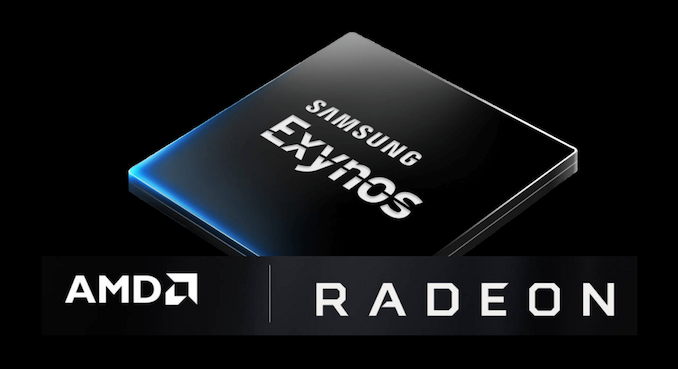
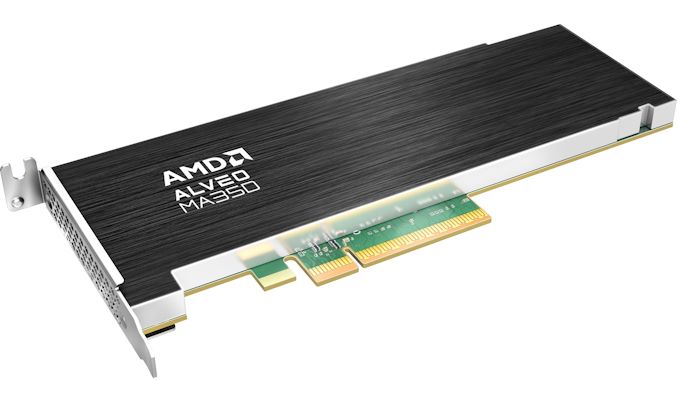
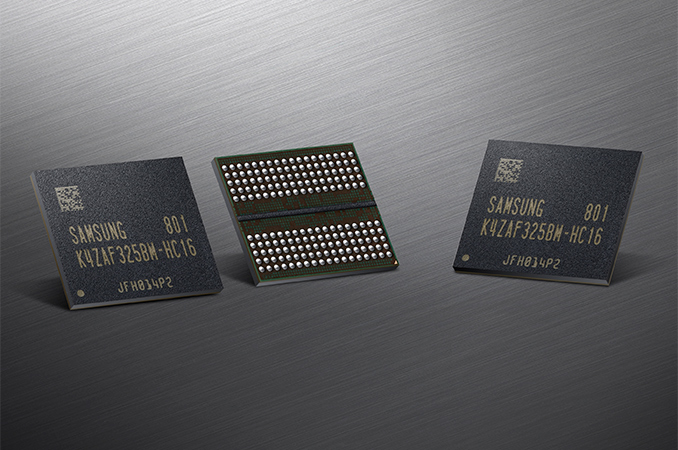

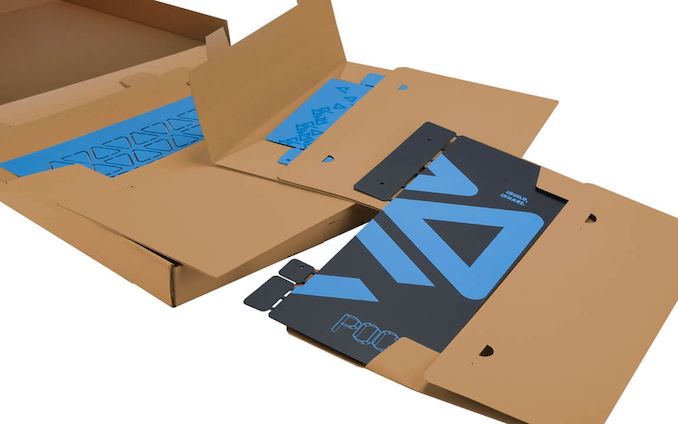
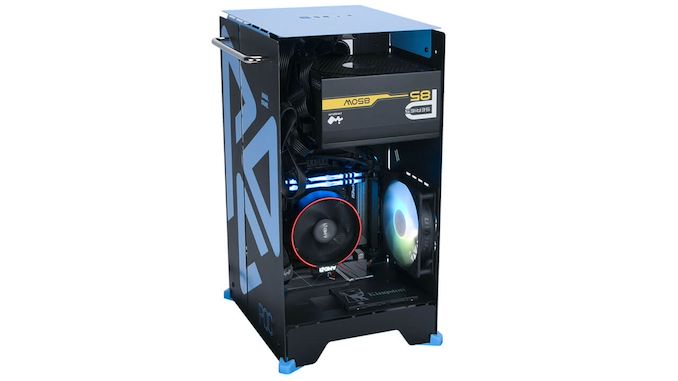
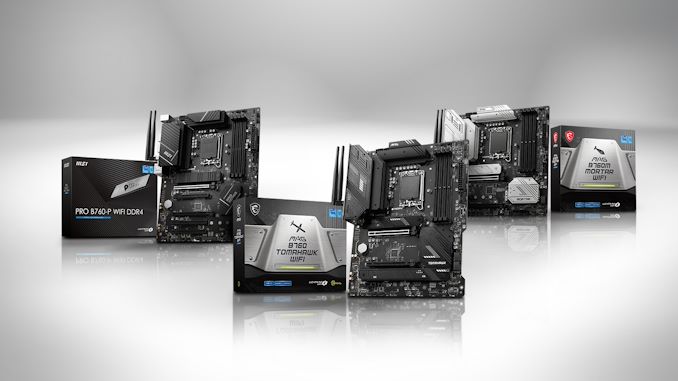


















Bookmarks